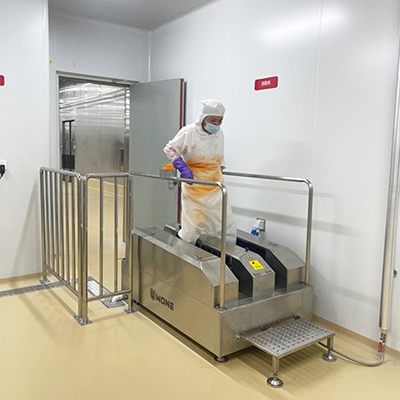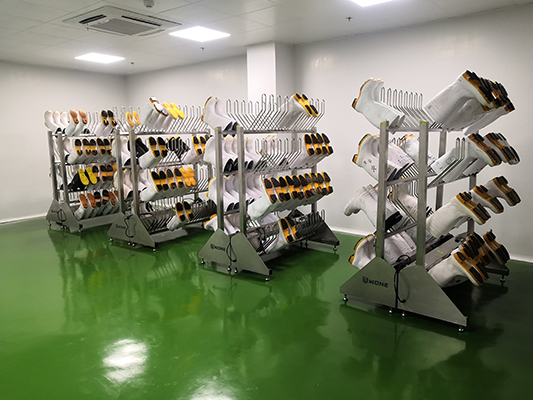How to configure personnel hygiene facilities in food factories?
How to configure personnel hygiene facilities in food factories?
Personnel hand and foot hygiene is the first line of defense for food safety and sanitation. The hands and feet of food factory workers are
potential vectors for the introduction of harmful pathogens, such as bacteria, viruses, and allergens, into the production environment. These
contaminants can be easily picked up from surrounding areas and then transferred to food, equipment, and work surfaces, resulting in
large-scale microbial contamination. This poses a serious threat to consumer health, as consuming contaminated food can lead to serious
foodborne illness. In addition, food contamination due to poor hand hygiene can trigger product recalls, which can result in costly financial
losses, regulatory fines, and reputational damage to the company.
Usually, food factories are equipped with personnel hygiene facilities such as hygiene cleaning stations that can do the hands and boots
hygiene at the same time, hand hygiene facilities which include cleaning and sanitizing hands, and shoe or boot hygiene facilities that
usually can cleaning boot sole and upper.
- Provide a sufficient number of hand washing stations to accommodate the flow of workers during shift changes or high traffic periods.
- Equip hand washing stations with sensor-activated faucets and soap dispensers to minimize re-contamination.
- Ensure that warm water, liquid antibacterial soap and disposable paper towels or air dryers are available.
2. Boot cleaning and disinfection:
- Install shoe and boot washing machines or hygiene station that enbrance shoe cleaning and disinfection at the entrance to allow workers
to thoroughly clean and disinfect their shoes before entering the production area.
- If employees go from a low-cleanliness workshop to a high-cleanliness workshop, a shoe cleaning machine is also required at the exit.
- Choose a boot washing machine with automatic or semi-automatic features (such as brushes and water sprayers) to ensure effective
cleaning.
- Add disinfectant in the boot washing station or on the disinfection mat and maintain the appropriate concentration level.
- Provide a boot drying area or boot cover to prevent re-contamination after the cleaning and disinfection process.
3. Accessibility and Workflow:
- Position sanitation stations at main entrances, making them the first point of contact for all workers entering production areas.
- Ensure the layout of stations is intuitive and user-friendly, with clear signage and visual cues to guide workers through the handwashing
and boot cleaning process.
- Analyze traffic flow and worker movement patterns to optimize the location and design of stations to minimize congestion and promote
efficient use.
4. Monitoring and Maintenance:
- Implement a comprehensive monitoring system to track sanitation station usage and performance, including consumption of consumables
and any equipment failures.
- Develop a regular maintenance schedule to clean stations, restock consumables, and address any issues that may arise to ensure the
system continues to be effective.
- Regularly review and update the design and functionality of stations based on feedback, usage patterns, and evolving industry best
practices.
5. Training and Compliance:
- Develop a comprehensive training program to educate all employees on proper handwashing and boot cleaning procedures, emphasizing
the importance of personal hygiene in food safety.
- Implement a system to monitor and enforce compliance with sanitation station usage, ensuring all workers follow established protocols.
- Provide visual aids, such as instructional signs and video demonstrations, to reinforce correct techniques and encourage continued use of
workstations.
These configurations are just a guide, and the specific configurations are planned in conjunction with the structure and layout of the factory.
For more information on food safety and sanitation, please communicate with us.


.jpg)
.jpg)
.jpg)
.jpg)
.jpg)

.jpg)
.png)
.jpg)

.jpg)
.jpg)
.jpg)
.jpg)
